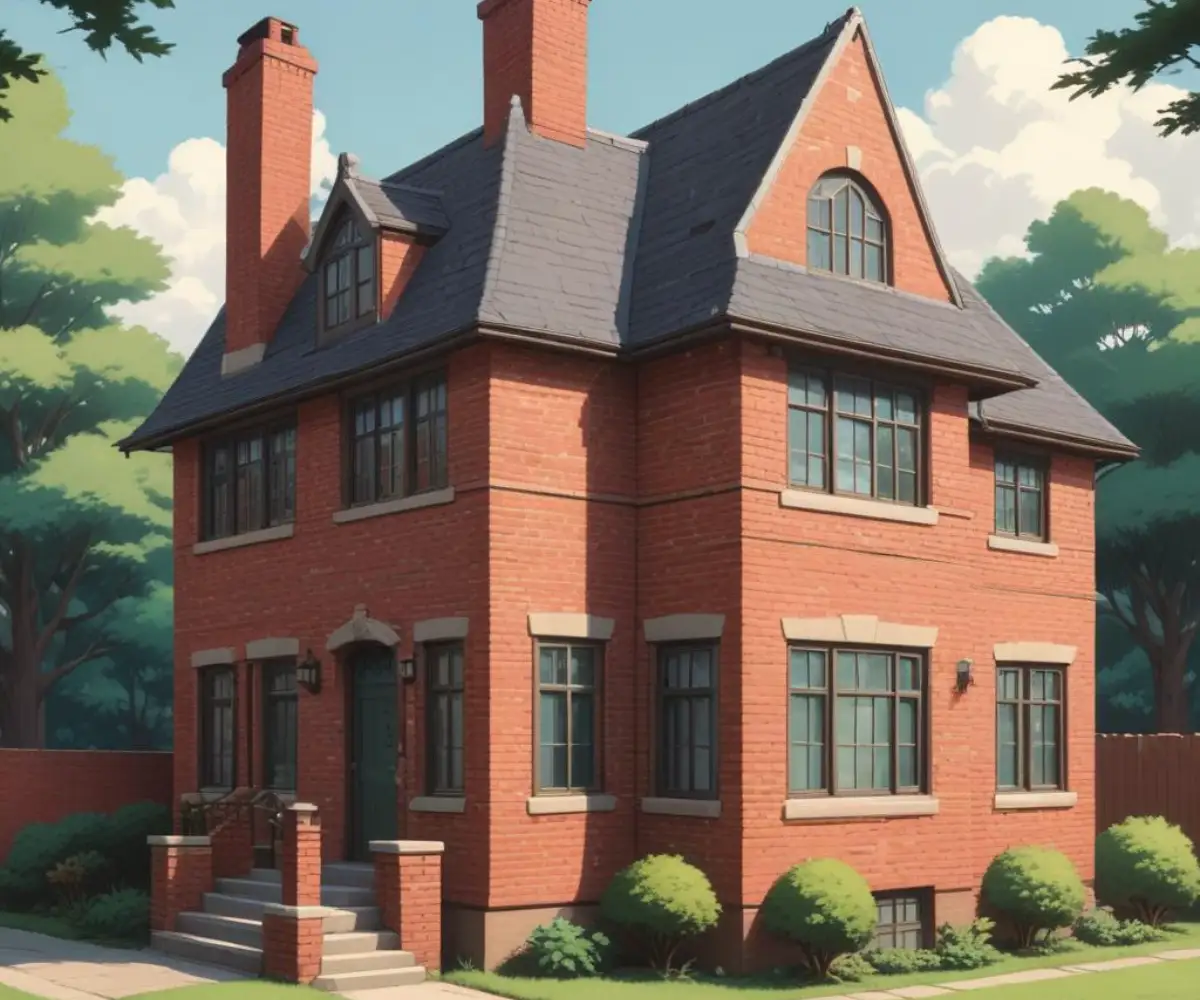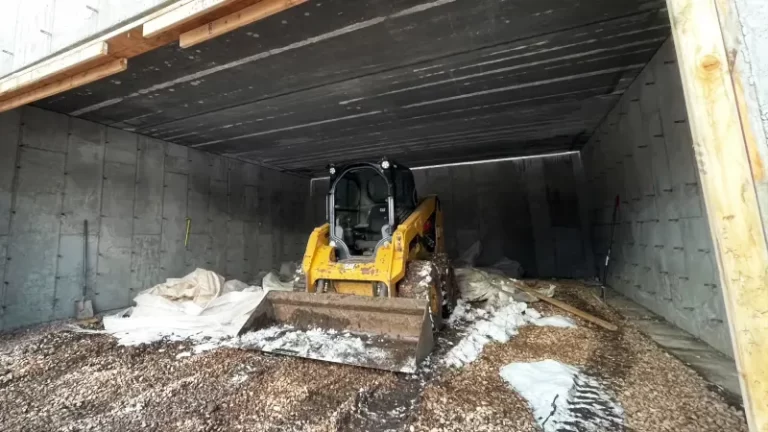Is Your 1980s Dream Home a Nightmare in Disguise?
The 1980s gave us big hair, bold fashion, and some truly iconic music. It also gave us a wave of new homes, built to accommodate growing families with features like master suites and more open floor plans. Today, these homes can seem like the perfect blend of modern layout and established neighborhood charm.
But beneath the surface of that brick facade and those bay windows, serious problems could be lurking. While not as old as mid-century homes, houses built in the 1980s are now entering their 40s, an age where critical systems and materials can begin to fail. Ignoring these potential issues can turn your dream home into a costly and dangerous nightmare.
You'll Learn About
The Hidden Dangers: What’s Lurking in Your 80s Home?
From hazardous materials used during construction to systems that are now dangerously outdated, it’s crucial to know what you might be up against. Many of these problems aren’t visible during a typical walkthrough, making a professional inspection absolutely essential before you buy.
The Asbestos Threat: More Than Just Popcorn Ceilings
Though its use was declining, asbestos was still present in a variety of building materials in the 1980s. While most people think of popcorn ceilings, this dangerous mineral can also be found in other places. Homeowners should be aware of these risks before starting any renovation projects.
One common location for asbestos is in vinyl flooring. Many homes from this era have sheet vinyl flooring with an asbestos paper backing that can release harmful fibers if torn or improperly removed. Another well-known culprit is the textured “popcorn” ceiling, which often contained asbestos for fire resistance and texture. Disturbing this material can be hazardous, and a proper cleanup after popcorn ceiling removal is critical to ensure your family’s safety.
Outdated and Dangerous Electrical Systems
The electrical systems in 1980s homes are a significant concern. While they are more modern than those in older houses, they often feature components that are now known to be serious fire hazards. Two of the most notorious are Federal Pacific Electric (FPE) Stab-Lok and Zinsco electrical panels.
Federal Pacific panels were widely installed in homes from the 1950s through the 1980s and are linked to thousands of house fires annually. Their breakers frequently fail to trip during an overload or short circuit, leading to overheating and fire. Similarly, some homes may still have aluminum branch wiring, which was used as a cheaper alternative to copper and is known for causing loose, arcing connections that can ignite.
The Ticking Time Bomb: Polybutylene Plumbing
One of the most infamous problems in homes built from the late 1970s to the mid-1990s is polybutylene (PB) plumbing. Marketed as a revolutionary, low-cost alternative to copper, these flexible gray plastic pipes turned out to be a massive failure. The material reacts with common disinfectants in public water supplies, like chlorine, causing the pipes to become brittle from the inside out.
This degradation leads to micro-fractures that can result in sudden, catastrophic pipe bursts without any warning. A leak from a PB pipe can cause thousands of dollars in water damage, and many insurance companies will refuse to cover a home that still has this plumbing system installed.
Poor Energy Efficiency and Dated Designs
Compared to today’s standards, homes built in the 1980s are often poorly insulated and sealed. This can lead to drafty rooms, inconsistent temperatures, and sky-high utility bills. Common issues include single-pane windows, inadequate attic insulation, and aging, inefficient HVAC systems.
Aesthetically, the design choices of the 80s can also feel very dated. Think golden oak cabinets, shiny brass fixtures, and closed-off kitchens. While these are cosmetic issues, updating them can significantly improve your enjoyment of the home and its resale value.

Your Action Plan: Modernizing Your 1980s House
Owning a home from the 1980s doesn’t have to be a liability. With a clear plan, you can address these potential problems, improve your home’s safety and efficiency, and transform it into a modern, comfortable space. It’s about prioritizing the right projects to protect your investment and your family.
Prioritizing Your Renovations: A Step-by-Step Guide
It’s crucial to tackle renovations in a logical order, focusing on safety and structural integrity first. Begin with the most critical systems before moving on to cosmetic upgrades. This approach ensures you’re addressing the biggest risks before they can cause catastrophic damage.
First, address any imminent safety hazards. This includes replacing faulty electrical panels and addressing any polybutylene plumbing. Next, focus on mitigating other hazardous materials like asbestos. Once the major safety issues are resolved, you can turn your attention to improving energy efficiency and finally, updating the aesthetics to your personal taste.
Tackling Electrical Hazards Head-On
If your home inspection reveals a Federal Pacific or Zinsco panel, or aluminum branch wiring, your first call should be to a licensed electrician. Do not attempt to inspect or repair these systems yourself. A complete panel replacement is the only recommended solution for these outdated and dangerous components.
While the electrician is on-site, have them install Ground Fault Circuit Interrupter (GFCI) outlets in all required areas, such as kitchens, bathrooms, and outdoor spaces. These devices provide crucial protection against electrical shock and are a modern safety standard that many 80s homes lack.
Solving Plumbing Woes for Good
Identifying polybutylene pipes is the first step. Look for flexible, gray plastic pipes near your water heater, under sinks, or entering your home from the main shutoff valve. The pipes are often stamped with the code “PB2110.”
If you confirm the presence of PB pipes, the only permanent solution is a complete home re-pipe. This is a significant undertaking but is essential to prevent devastating water damage and ensure your home is insurable. Modern materials like PEX and copper are reliable, long-lasting alternatives.
Boosting Energy Efficiency and Comfort
Improving the energy efficiency of a 1980s home can lead to significant savings on your utility bills and a more comfortable living environment. Start with the building envelope—the barrier between the inside and outside of your home. Sealing air leaks around windows, doors, and foundation is a great first step.
Upgrading to modern, double-pane windows and adding insulation to the attic can make a massive difference. You can also improve your home’s curb appeal and efficiency when you replace sidelights with wood or upgrade your main entry door. Finally, consider replacing an aging HVAC system with a new, high-efficiency model to maximize comfort and minimize energy consumption.
Cost vs. Benefit: Is a 1980s Home Renovation Worth It?
Investing in an 80s home requires a clear understanding of the potential costs. While the initial purchase price might be attractive, the necessary upgrades can add up quickly. It’s important to weigh these expenses against the long-term benefits of a safer, more efficient, and more valuable home.
| Potential Problem | Estimated Replacement/Repair Cost | Benefit of Addressing |
|---|---|---|
| Federal Pacific Electrical Panel | $1,500 – $4,000 | Crucial Fire Prevention. Ensures electrical system safety and insurability. |
| Polybutylene Plumbing | $4,000 – $15,000+ | Prevents Major Water Damage. Eliminates the risk of catastrophic pipe failure. |
| Asbestos Abatement | $500 – $5,000+ | Health & Safety. Removes carcinogenic materials, essential for renovations. |
| Energy Efficiency Upgrades (Windows & Insulation) | $5,000 – $20,000+ | Lower Utility Bills. Improves comfort and reduces long-term energy costs. |
| HVAC System Replacement | $5,000 – $12,000 | Improved Efficiency & Air Quality. Provides reliable heating and cooling. |
Frequently Asked Questions About 1980s Homes
Is radon a concern in houses built in the 1980s?
Yes, radon can be a concern in homes of any age, including those built in the 1980s. Awareness of radon risks grew significantly during this decade, but many homes were still built without modern radon-resistant features. It is a naturally occurring radioactive gas that can seep into a home through cracks in the foundation, and it’s a leading cause of lung cancer. Testing your home for radon is simple, inexpensive, and highly recommended.
Are the foundations of 1980s houses reliable?
For the most part, foundations from this era are reliable, typically consisting of concrete slab-on-grade or concrete block stem walls. However, after 40 years, settlement issues can become apparent. Look for signs of trouble like diagonal or stair-step cracks in exterior brickwork or interior drywall, sticking doors, and uneven floors, which could indicate foundation movement that requires professional assessment.
What about the quality of construction in the 80s?
The 1980s saw a mix of construction quality. While many homes were built to a solid standard with modern materials like drywall and grounded electrical systems, it was also an era of some questionable material choices. The use of pressboard siding, cheap particle board for subflooring, and the infamous polybutylene pipes are examples where cost-cutting measures led to long-term problems for homeowners.
Embracing the Charm, Erasing the Problems
A house built in the 1980s can be a wonderful place to call home, offering a great layout in a mature neighborhood. The key is to go into the purchase with your eyes wide open to the potential problems that come with a 40-year-old property. Understanding these issues allows you to budget for necessary repairs and make informed decisions.
By systematically addressing the safety hazards, improving energy efficiency, and updating the dated aesthetics, you can protect your investment and transform an 80s house into a safe, modern, and beautiful home for the years to come. Don’t let the hidden flaws deter you—let them empower you to create the home you’ve always wanted.

